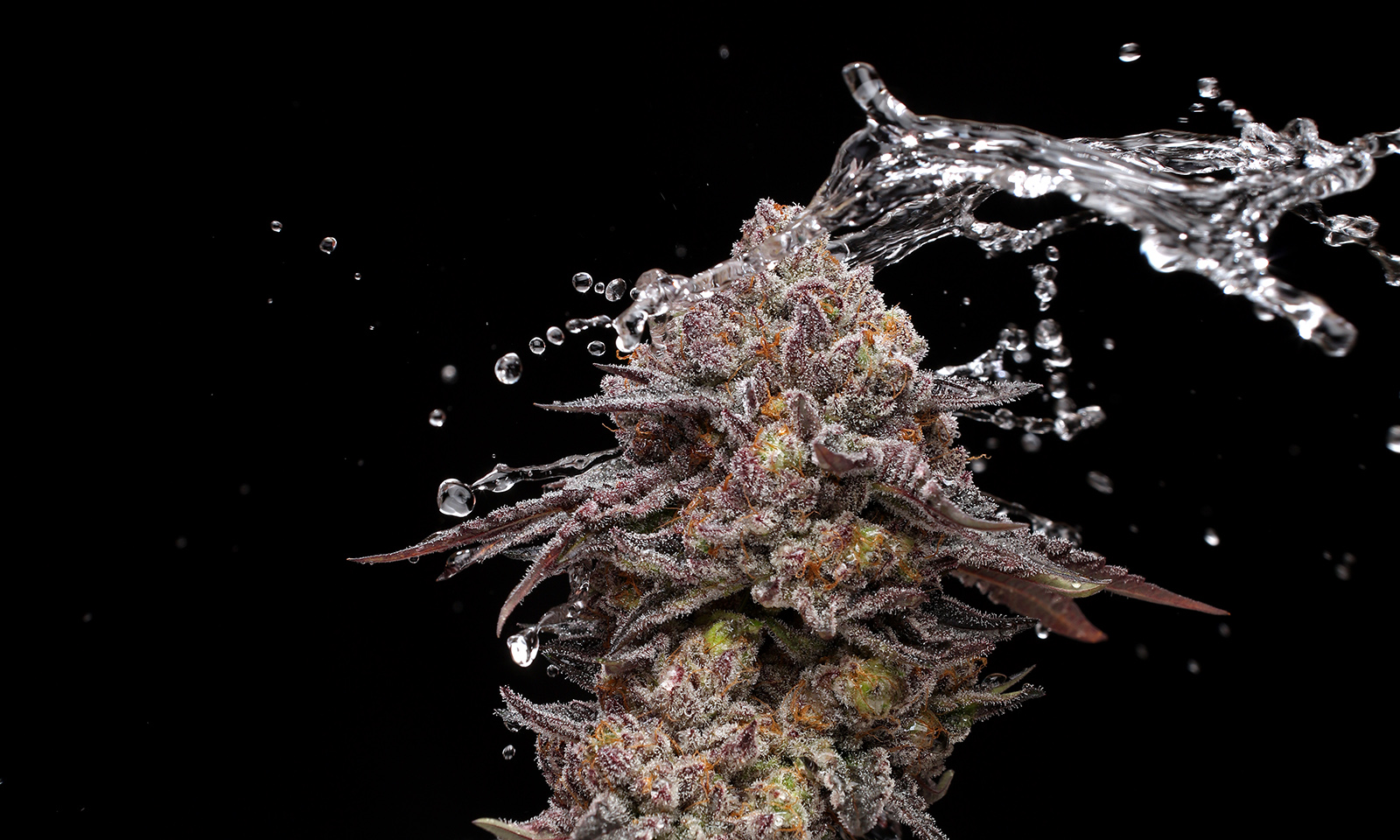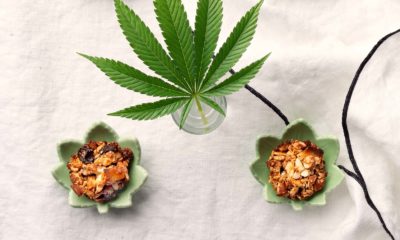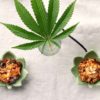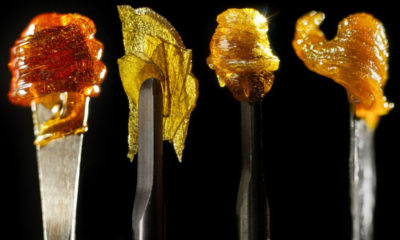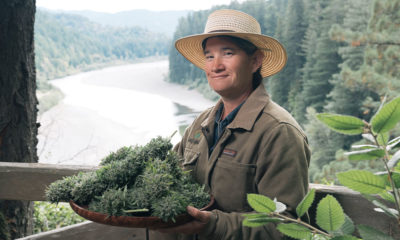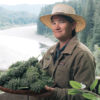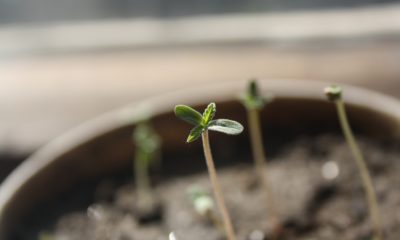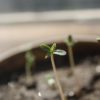It Takes The Village: Inside Sacramento’s Cannabis Scene
The two famed breeders behind Symbiotic Genetics reveal the origins of their hit Mimosa strain, the challenges of California’s legal market and the rise of Sacramento’s cannabis scene.
When people talk about California’s legendary cannabis, they frequently mention growing ganja grown deep in the Emerald Triangle and weed sparked up on the bustling streets of Los Angeles and San Francisco. But there’s another region in the Golden State that is now demanding attention. Since California’s adult-use cannabis market came online in 2018, Sacramento has exploded onto the scene as a hub of top-shelf indoor cultivation.
Few people in town — perhaps only Gov. Gavin Newsom — have helped push Sacramento to the top of the cannabis stratosphere more than its cultivators, who are growing some of the best cannabis in the world. But in recent years, one local cultivator has pushed the envelope so far that everyone else in town (and across the state) is now growing the genetics he’s helped curate and breed.
As half of Symbiotic Genetics, The Village finds himself among a small group of cultivators giving Sacramento’s cannabis a global reach. At one point, there was so much of his Mimosa strain being grown in town, you could have mistaken Sacramento for the brunch capital of the world.
Today, The Village and his breeding partner Budologist are at the top of Hype Mountain. Here is the full story of how he went from budtender to championship breeder leading the City of Trees into the future.
Village Foundations

The Village got his start working in 2010 at a medical marijuana dispensary called South Sacramento Care Center for about a year and a half, back in the looser days of California’s medical marijuana market.
“I budtended, I vended, it kind of helped me know what was good and what was bad on quality standards,” he told Cannabis Now.
When SSCC started their cultivation project in 2011, he knew that was exactly where he wanted to focus his passion for cannabis. He spent a year at the bottom of the ladder as the grunt worker.
“I actually lived at the warehouse for four years and I think that really helped me learn a lot as well. Just being there all the time,” he said.
The Village spent the first year following orders. Leaf picking and changing reservoirs were common activities. Eventually, as he spent more and more time caring for the plants, he picked up on what he believed to be some flaws in the cultivation process.
“I was reading like crazy on all the online forums, just trying to figure out everything,” he said. “I lived there and I didn’t have a life.” The Village guessed he would go into the grow room about 20 times a day back then.
Not long after, he took over the whole cultivation facility. Speaking to how he got his nickname, he said that the SSCC workers started calling the facility “The Village.”
“It was just a code word,” he said. “Instead of saying ‘Hey, we’re going to the grow,’ we’d say we were going to the village.”
The Start of Symbiotic Genetics
A big part of The Village’s program in the early years was being the caregiver for numerous patients and growing them a monthly supply of marijuana. He helped supply about a pound of cannabis a month for free to over 15 patients selected to be a part of their compassion program.
“We wanted to have them testify if anything ended up in court, but if it were in federal court it wouldn’t even matter,” The Village said. “I thought it was really cool when we started pushing CBD for them once I got a hold of a couple of cuts.”
The Village noted that well before he started going public with his brand, he was working with solventless hash enthusiast and medical producer Matt Rize. When Rize would post hash he washed from cannabis provided by The Village, he would list him as a private grower, allowing him to stay anonymous despite the good reputation the product earned.
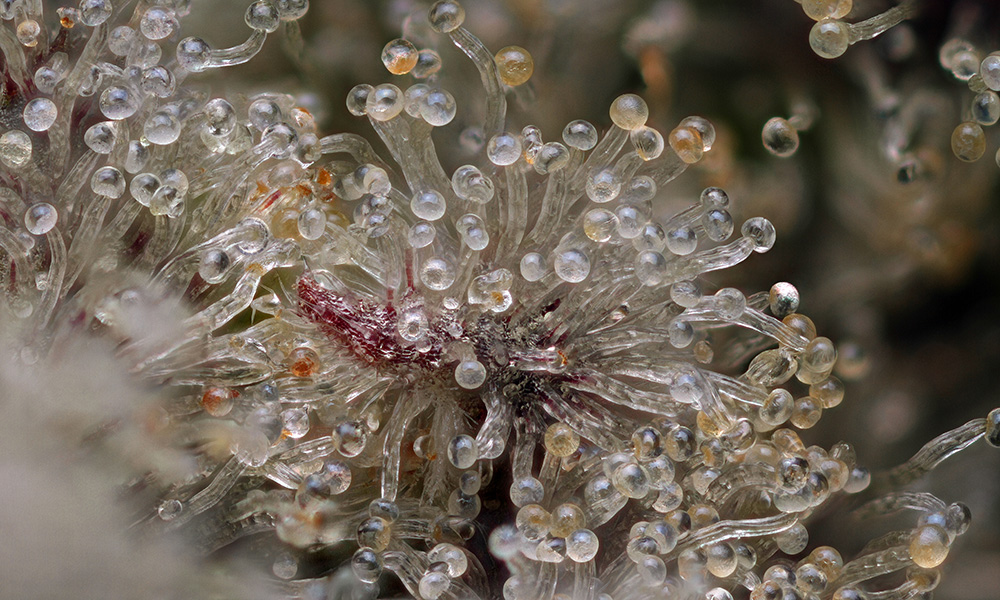
“Me and him had a year or two where we were dropping insane ice wax,” The Village said.
Strains like Tangie and Sour Diesel were a hit with everyone lucky enough to score some.
“In LA we dropped Tangie for $200 a gram, and it sold out. We only dropped 10 or 20 grams, but the hype was real, and it was crazy,” he said.
At this point, The Village still hadn’t even started breeding, he was just networking and growing like crazy. He met ET Extracts around that time. ET connected him with Budologist, The Village’s eventual partner in crime at their award-winning breeding collaboration, Symbiotic Genetics. Budologist had a Pennywise cut he received from Geek Mike that The Village was keen to add to his stable.
“We eventually met up and I got the cut, and we became friends at that point,” The Village said. “Three or four months later, he went ahead and asked [the breeder behind] Supernova Gardens if he could give me the Purple Punch cut.”
Drink it In: The Rise of Mimosa
A couple of years after they met in 2013, Budologist approached The Village about starting the breeding project that would become the renowned Symbiotic Genetics. Budologist planned to find a Purple Punch male that shared as many traits as possible with the prized Purple Punch female phenos and go from there. After another round of blessings from Supernova, the two built out a two-light breeding room.
“It was in the seeds from the original batch that [Supernova] found the clone-only cut,” Budologist said. “Basically as soon as he gave me the seeds, it gave me the idea I wanted to do breeding. I knew I should pop the seeds and find a male to cross with the female Purple Punch.”
Before going on to stabilize Purple Punch in the room and provide seeds to the masses, the first breeding projects featured a Cookies and Cream male Budologist selected. The first crosses in the room — which, don’t worry, would eventually pump out champions — were Cookies and Cream x Forum Cookies and Cookies and Cream x Animal Cookies.
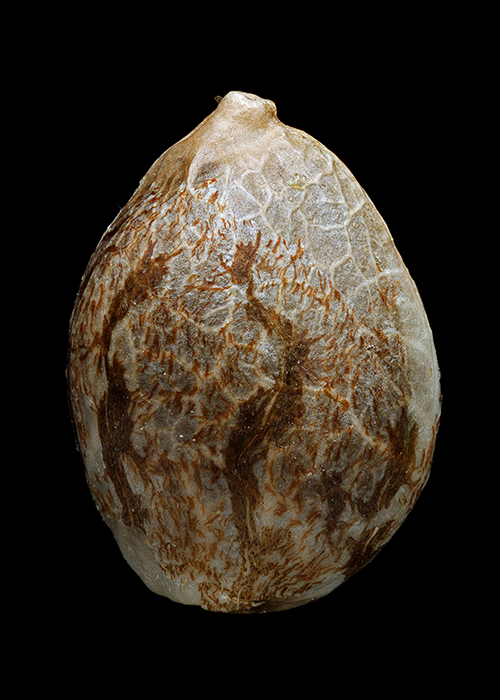
“Those didn’t work out because we had a lot of [hermaphrodites], and then we started the Punch project right after that,” The Village said. “We stayed in that two-light room for a while. Then once the Punch took off, when we dropped it, we were like ‘Dang, we don’t make enough seeds.’”
It would end up being roughly two years to get the seeds of the Purple Punch ready after the initial wave of excitement caused by the flower.
They dusted the original elite Purple Punch clone with a male, and then popped 150 seeds. In the process of the Punch propagation, about half of them were males. From the remainder, they narrowed the larger pack down to three of their favorites.
“We flowered them out completely. Males, when they’re really towards the end of flower, they’ll start putting off resin. You can actually rub that resin. The smell is like what a female would smell like,” Budologist said. He also noted that resin will smell just as strong as the resin from a female plant. “You can get that sense of what the terps are.”
To get down to the three males, they selected phenotypes based on the quality of the bud structure and by picking the ones that had the strongest flavor reminiscent of the female Purple Punch. The seeds from that exceptionally bred Purple Punch hit the wider market in 2017.
The Symbiotic team also crossed the best male with five females, including LA Confidential, Clementine and Tangie.
On one fateful day in 2017, The Village and Budologist named the Purple Punch x Clementine cross “Mimosa.” In the years since it was released, Mimosa has been seen on podiums and winners’ lists across the country.
“It just feels really good,” Budologist said. “It’s a great thing to see your creation doing well all over the place. It’s definitely something that even if people haven’t heard of Symbiotic Genetics, they’ve heard of Mimosa.”
The Village says it’s the team’s most famous strain to this day.
Building a Global Breeding Project
Looking towards the future, the Symbiotic Genetics team is building out a new state-of-the-art breeding facility in Sacramento. They also want to get Budologist up to the capitol city full time, so he doesn’t have to continue his two-hour commute to participate in the collaboration. Budologist has been working in the corporate world for 12 years as he’s simultaneously pursued his plant passion, but he says it is “a dream come true” to transition full-time to cannabis breeding.
“The plan is to get him here, and build an amazing breeding space with multiple rooms,” The Village said. “Then, we’ll have a pheno-hunting room and a testing room so we can fully test our genetics and not have to send them out to people.”
We asked The Village how many times the best phenotype of any given strain had been found by one of the testers he gifted the strain to. He could only think of two occasions where the genetics made their way back to him.
“PureMelt gave me his Mimosa pheno. He gave me the Mimosa pheno Exotic Genetix used in their Strawberry line,” said The Village. “It says Strawberry and Cookies and Cream, but actually, it’s Mimosa and Cookies and Cream. It’s a strawberry-dominant pheno of Mimosa. PureMelt won fourth place at the 2017 Emerald Cup with that one.”
Strains from Symbiotic Genetics also took two spots in the top 10 of the personal sungrown cannabis category at the Emerald Cup, the premier competition for Northern California cannabis where many cultivators sell their seeds, in 2018. Their Cherry Punch genetics placed third and Mimosa placed fourth. Now the plan is to produce a lot more seeds. The plan for the new facility is to be able to work with four to five different males at any given time, instead of just the one they previously had the room for.
“We’ll have multiple things going. It will kind of be like the Seed Junky approach where you’re just dropping tons of new genetics all the time,” The Village said. “We’re still going to do the whole approach of testing before we release anything. So that’s going to slow us down, but once we get stuff stacking, it’s going to be releasing fast. I’m hoping every six months we’ll have a new line.”
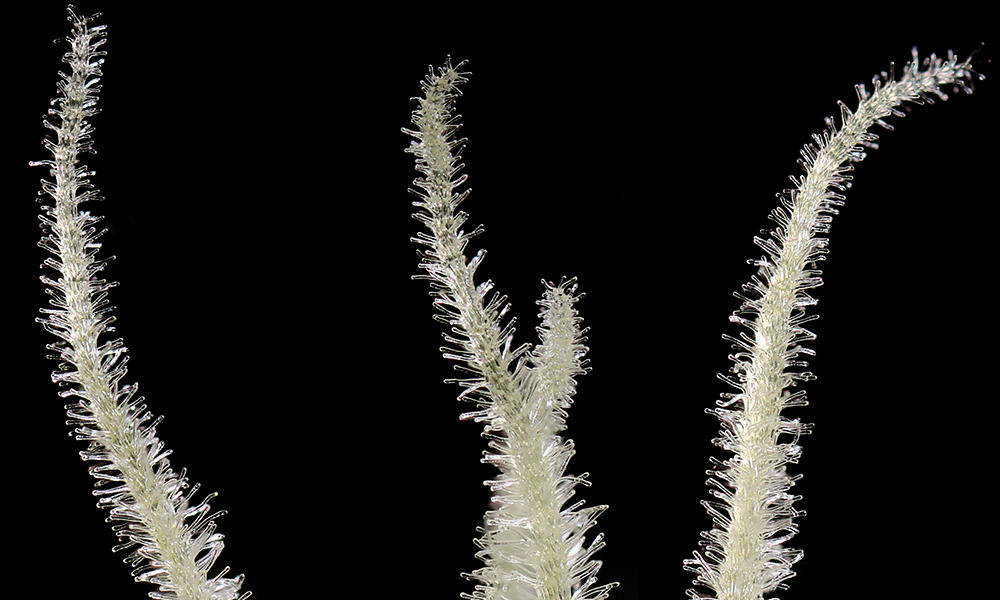
The essential shift now occurring within Symbiotic Genetics is that its two leaders are no longer thinking about cannabis breeding as a hobby.
“We feel like the sky’s the limit once we have the financial backing, once we have the space to work the types of things we can do,” said The Village. “We created Mimosa and all these strains with two lights in a small-*ss room.”
The potential was more evident than ever at last year’s Emerald Cup. People traveled from places like Argentina, Spain and Brazil just to get their hands on Symbiotic’s prized seeds.
Currently, The Village is sitting on over 70 cuts for when things go into full gear, including some of his own phenos and some of the GMO and WiFi Mints other people have given him. He said he’d most like to add to his collection “those old OGs you kind of don’t see — they’re hard to get verified.”
Over the years, The Village said he has gotten his hands on things he thought were old school OG cuts, but they never were what was claimed.
“I have the Legend, Paris, the Lemon Fuel from Alien Labs,” he said. “I mean I could be totally wrong, but they all seem like there’s not a big difference between those three.”
His theory is that OG is so finicky that it needs a much different environment compared to other strains in order to express its full character.
“I think OGs express themselves more if you keep it a little warmer,” he said. “If you don’t, it stays in a state where it’s unexpressed. So they kind of look the same, but they’re not fully able to push out the characteristics of what they are. So that’s my kind of thing.”
Other targets for the collection include Chem 91 and Super Silver Haze.
“There’s a lot of new stuff I think is amazing, but I’d like to go back to the roots,” The Village said. He added that this emphasis on old-school cannabis is why Symbiotic Genetics recently pollinated an bunch of different females with a Kombucha male (a cross of Sour Diesel and a Purple Punch F2) featuring the old-school diesel flavor. “That’s why we did the Kombucha line, to bring the Sour Diesel back in a new kind of way,” he said. “Our male we selected was very diesel-dominant.”
Capital in the Capitol
Like many other cultivators who have been growing cannabis in California since before the 2018 adult-use regulations came down, The Village has been struggling to adapt to the new Golden State. In early 2019, The Village’s old facility was shut down — right before he was preparing to do a giant Banana Punch propagation — because he hit a licensing snafu around the old building.
“I mean, it sucks,” The Village said. “There are a lot of people that are being held back because of licensing. It’s just so new to everyone. We’re all learning and some of the cities are easier than others.”
The Village says a lot of people already had grows that were dialed in to fit the state’s tight restrictions. But permitting a space you’ve already been using is hard. “Most of the time you give [the state’s cannabis regulators] plans and they approve it. Well, now you’re giving them plans that are already built, so if they don’t approve it, then you essentially have to shut down to make those changes,” he said.
The Village and Budologist knew they didn’t want to do a patchwork job and decided they were just going to do a complete rebuild of the facility instead of a smaller remodel. They’re now on the hunt for a partner to help fund the effort.
“We could have done it ourselves, but it would have been cutting corners because we don’t have the capital that you need to build one of these facilities,” The Village said.
The Village recognizes certain challenges of the legal market, “but we’re not living in the shadows. When I lived at the warehouse I was very fearful of getting raided. It was scary. But now I guess the only thing you have to worry about is thieves.”

And those plotting against the Sacramento cannabis industry have been a major concern as of late. Due to the cannabis industry’s lack of banking access, dispensaries are forced to horde large piles of cash to pay taxes. All this money has proven too tempting, and with Sacramento’s rise to cannabis prominence, it became an even bigger target.
The Village says it’s particularly bad at the moment. At the end of the summer in 2019, one of the dispensaries he works with got hit by thieves, and numerous farms have been targeted, too. One night, two different facilities were hit. One dispensary lost $37,000 in four minutes.
Despite the rough nights, things are generally going well for Sacramento’s cannabis scene. Its cultivators continue to travel up and down the state’s highways, returning with every trophy in the game. And when the Cannabis Cup visited Sacramento for the first time as a legal event in 2018, locals stole the show.
“Sacramento is awesome,” Budologist said. “I think there is a lot of competition, which I think is the best thing because competition makes you work harder.”
He believes Sacramento’s population is open enough not to look down on the industry. “It’s definitely something people aren’t as embarrassed about, you know?” he said.
While the short term has a bit of mystique to it, The Village, Budologist and their work at Symbiotic Genetics are not going anywhere. We look forward to continue watching them push the bar when it comes to exciting new cannabis genetics.
TELL US, have you tried the Mimosa strain?
Originally published in Issue 40 of Cannabis Now. LEARN MORE



